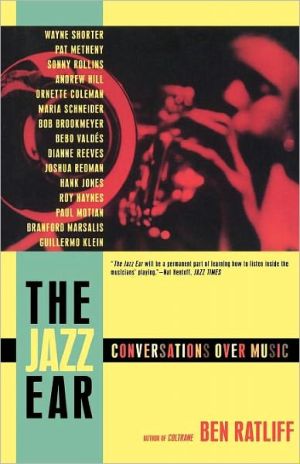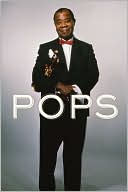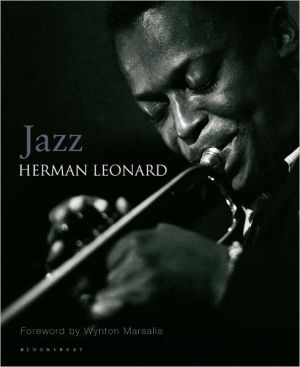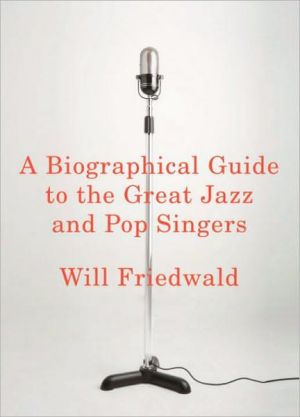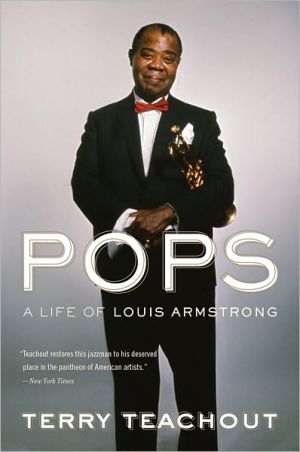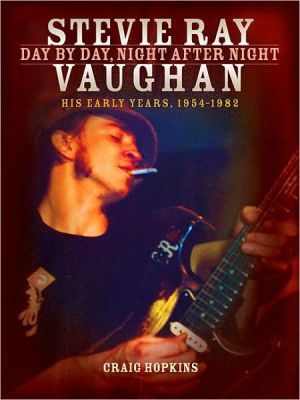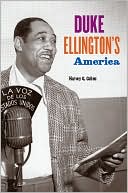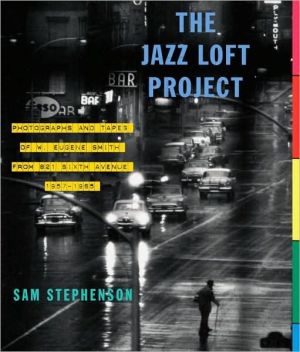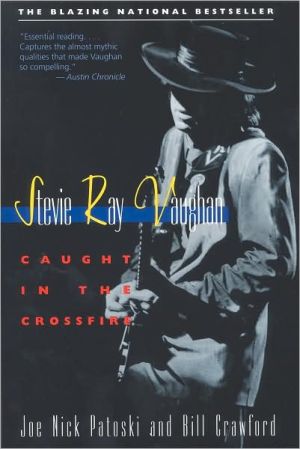The Jazz Ear: Conversations over Music
“The Jazz Ear will be a permanent part of learning how to listen inside the musicians playing.”—Nat Hentoff, Jazz Times\ Jazz is conducted almost wordlessly: John Coltrane rarely told his quartet what to do, and Miles Davis famously gave his group only the barest instructions before recording his masterpiece Kind of Blue. Musicians often avoid discussing their craft for fear of destroying its improvisational essence, rendering jazz among the most ephemeral and least transparent of the...
Search in google:
“The Jazz Ear will be a permanent part of learning how to listen inside the musicians playing.”—Nat Hentoff, Jazz TimesJazz is conducted almost wordlessly: John Coltrane rarely told his quartet what to do, and Miles Davis famously gave his group only the barest instructions before recording his masterpiece Kind of Blue. Musicians often avoid discussing their craft for fear of destroying its improvisational essence, rendering jazz among the most ephemeral and least transparent of the performing arts.In The Jazz Ear, acclaimed music critic Ben Ratliff discusses with jazz greats the recordings that most influenced them and skillfully coaxes out a profound understanding of the men and women themselves, the context of their work, and how jazz—from horn blare to drum riff—is conceptualized. Ratliff speaks with Sonny Rollins, Ornette Coleman, Branford Marsalis, Dianne Reeves, Wayne Shorter, Joshua Redman, and others about the subtle variations in generation and attitude that define their music.Playful and keenly insightful, The Jazz Ear is a revelatory exploration of a unique way of making and hearing music. Publishers Weekly Ratliff, the jazz critic for the New York Times, spent just over two years interviewing jazz greats for a recurring feature at the paper: rather than ask musicians like Pat Metheny or Dianne Reeves to name their favorite records, Ratliff sat with them as they listened to songs and picked out the qualities they found most artistically compelling. The approach brings some surprises, as his subjects pick everything from Ukrainian cantorial music to Ralph Vaughan Williams to the Fifth Dimension, but each chapter brings provocative insights and will have readers scurrying to track down various records. (Ratliff also provides a listening guide for each of his interviewees.) Though each chapter stands alone, connections are made from one interview to the next; Metheny and Joshua Redman, for example, both select songs from Sonny Rollins. The interview with Redman also hints at Ratliff's argument in his 2007 Coltrane: The Story of a Sound about jazz as a collaborative medium, while Branford Marsalis speaks candidly about young musicians' failure to understand the melodic legacy they've inherited, then plays a jazz-influenced piece by Stravinsky to make his point. Whether you're a seasoned listener or just discovering the form, Ratliff is a wonderful guide. (Nov. 11)Copyright © Reed Business Information, a division of Reed Elsevier Inc. All rights reserved.
\ From the Publisher"The Jazz Ear will be a permanent part of learning how to listen inside the musicians playing."—Nat Hentoff, Jazz Times\ "Ratliff is able to weave… fascinating and surprising portraits… Reading these chapters should remind us that the artists, like the music, are ones who continue to surprise us and delight us in so many ways. This marvelous addition to the jazz literature would make a wonderful [gift] for the jazz enthusiast, as well as a most enjoyable read for oneself as well."—Jazz & Blues\ "Ratliff’s style… goes down smoothly as a milkshake…I’ll surely be coming back to this one."—Jazz Notes\ "Ratliff asked musicians to get together some recordings — not their desert-island discs, not their top five, just music they'd be interested in talking about. [He is] a passionate and incisive writer about music."—Boston Phoenix\ "Fascinating."—The Boston Globe\ "A small treasure. Ratliff takes his curious, catholic ear to 15 artists and tangos with them on their own physical and psychic turf."—Time Out New York\ "Music lovers dig lists as much as anyone, maybe more. New York Times jazz critic Ben Ratliff takes the form to new heights in The Jazz Ear… The results are as bracing as John Coltrane's recordings at the Village Vanguard."—Charlotte Observer\ "Ratliff is infinitely knowledgeable… Fluid, inspired and, well, jazzy."—Fader\ "Ratliff is equally at home writing about R&B stars from Barbados, trans-gendered post-industrial rockers, and Coltrane... Now [in] The Jazz Ear… he talks to towering musicians like Sonny Rollins and Ornette Coleman while they listen to the music they like, from country to Wagner."—UrbanEye\ "In the jazz world, the ability to hear, conceptualize, compose or improvise with idiosyncrasy and sophistication requires big ears. Ben Ratliff is one of America's best and biggest-eared music journalists. Mr. Ratliff's questions often steer his responders from music theory to emotional response to sentimental remembrance, teaching readers how to open their ears and listen in new ways. For music enthusiasts wishing for bigger, better ears, Mr. Ratliff's interviews trace crossing pathways to new ways of listening to and enjoying jazz."—The Dallas Morning News\ "Remarkable… The Jazz Ear is a must read… Ratliff gives any music lover a unique insight to the exclusive world of Jazz musicians."—The Idaho Statesman\ "The Jazz Ear presents Ratliff's interviews with most of the greatest current jazz figures: Sonny Rollins, Ornette Coleman, Wayne Shorter, Maria Schneider, even Branford Marsalis. He likes to do something obvious with them—listen to music. The results are splendid."—Buffalo News\ "Ratliff's book stands out… [The Jazz Ear] admirably provides an unpretentious and reader-friendly window into jazz esthetics."— The Ottawa Citizen\ "[In The Jazz Ear,] luminaries ranging from Pat Metheny to Hank Jones, drawn out by Ratliff's sympathetic and seemingly all-knowing ear, give eloquent collective testimony to the wellsprings of the musician’s art."—Montreal Gazette\ "Revelatory…. Ratliff’s own ear, sharp critical chops and scene-setting interaction with his subjects make the artists come alive."—Kirkus Reviews\ "Each chapter brings provocative insights…. Whether you’re a seasoned listener or just discovering the form, Ratliff is a wonderful guide."—Publishers Weekly\ "Ideal… a sort of next step up into the magic of jazz… the conversations can become existentialist or metaphysical, for the musicians are very smart and sensitive."—Booklist (starred review)\ "Admirers of jazz should be deeply thankful for [Ben] Ratliff… The treasure of these conversations is not just their fluid and intimate manner but their focus on the recordings that had the greatest influence on the artists and their musical paths."—Library Journal (starred review)\ "Luminous... Ben Ratliff is the rare critic who can hold his own in conversation with musicians and incite them to reveal how they think and work."—Alex Ross, author of The Rest Is Noise\ "With his probing, empathetic questions and wide-ranging musical knowledge, Ben Ratliff elicits insightful, profound, and revealing remarks from some of the most significant musicians of our time."—Richard Brody, author of Everything Is Cinema\ \ \ \ \ \ Publishers WeeklyRatliff, the jazz critic for the New York Times, spent just over two years interviewing jazz greats for a recurring feature at the paper: rather than ask musicians like Pat Metheny or Dianne Reeves to name their favorite records, Ratliff sat with them as they listened to songs and picked out the qualities they found most artistically compelling. The approach brings some surprises, as his subjects pick everything from Ukrainian cantorial music to Ralph Vaughan Williams to the Fifth Dimension, but each chapter brings provocative insights and will have readers scurrying to track down various records. (Ratliff also provides a listening guide for each of his interviewees.) Though each chapter stands alone, connections are made from one interview to the next; Metheny and Joshua Redman, for example, both select songs from Sonny Rollins. The interview with Redman also hints at Ratliff's argument in his 2007 Coltrane: The Story of a Sound about jazz as a collaborative medium, while Branford Marsalis speaks candidly about young musicians' failure to understand the melodic legacy they've inherited, then plays a jazz-influenced piece by Stravinsky to make his point. Whether you're a seasoned listener or just discovering the form, Ratliff is a wonderful guide. (Nov. 11)\ Copyright © Reed Business Information, a division of Reed Elsevier Inc. All rights reserved.\ \ \ Library JournalAdmirers of jazz should be deeply thankful for Ratliff, New York Times jazz critic and author of Coltrane: The Story of a Sound . Jazz is perhaps the most elusive art form to discuss and critique, and Ratliff's latest book fills a vacuum in the realm of understanding jazz. Originally published as a series in the New York Times , the 15 conversations presented here consist of Ratliff sitting down with such diverse and talented luminaries as Sonny Rollins, Pat Metheny, Paul Motian, and Dianne Reeves. The treasure of these conversations is not just their fluid and intimate manner but their focus on the recordings that had the greatest influence on the artists and their musical paths. Ratliff's insight that one may understand musicians more by discussing the music that moves them rather than the music they have created results in a unique rendering of some of the major jazz artists of our time. An added bonus is the recommended-listening section, in which Ratliff shares his list of his subjects' seminal recordings. Highly recommended for all libraries.-Peter Thornell, Hingham P.L., MA\ \ \ \ \ \ Kirkus ReviewsCritical profiles illuminate the artistry of a variety of jazz musicians through conversations about the music they love. In his introduction, New York Times jazz critic Ratliff (Coltrane, 2007, etc.) explains where he got the idea of profiling some of his favorite artists by listening to music with them. One precedent was the "blindfold test," which has been a staple of Down Beat magazine for more than 60 years. The crucial difference is that where that test asks musicians to comment on a recording without being told the identity of the artist, Ratliff asked the artists to choose the recordings they wanted to discuss. Their choices are often revelatory. The legendary saxophonist Wayne Shorter limits himself to The Complete Symphonies of Ralph Vaughan Williams, while vocalist Dianne Reeves opts for country singer-songwriter Mary Chapin Carpenter as one of her selections. (She also made lunch for Ratliff and explained that her cooking method is the same as her approach to singing: "I work with my ear and try to make it feel right, or I just keep changing it until I like the way it tastes.") Ratliff's own ear, sharp critical chops and scene-setting interaction with his subjects make the artists come alive on the page and make the reader eager to hear the music, both that discussed and that of the artist discussing it. The range of artists profiled extends from giants of jazz, including Sonny Rollins, Pat Metheny and Ornette Coleman, to composer Maria Schneider to the new generation of jazz artistry embodied by saxophonist Joshua Redman (who pays tribute to Rollins as a seminal influence). "Listening with someone else is an intimate act," writes Ratliff, "because music reveals itself bydegrees." So do these musicians.\ \
